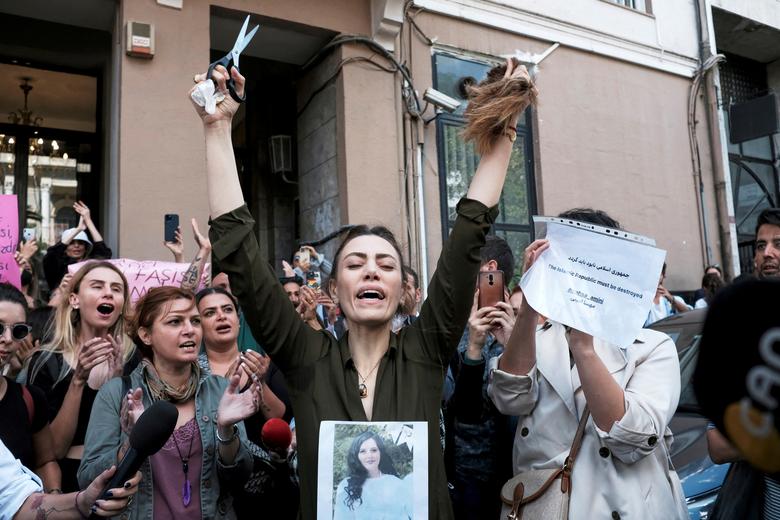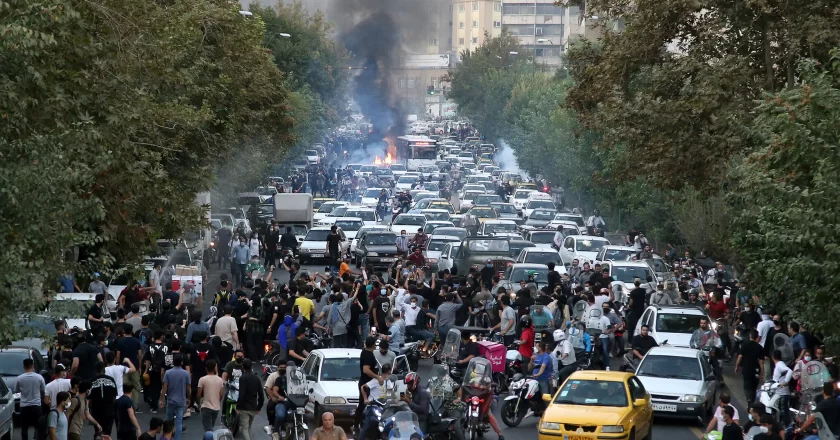Mahsa Amini’s death sparked an outburst of protests across Iran by countless people who were enraged by the unfair treatment she received. While she was exiting the subway in Tehran, the police spotted and arrested Amini for not wearing a hijab in accordance to Iranian law. Perhaps this could have simply meant that a small piece of hair was not tucked into her head scarf, but after it was pointed out, she was taken away to a detention center to undergo re-education. Amini died just three days after.

Protests have erupted with the women taking to the streets in anger, burning their head scarves in fires, cutting their hair, and chanting in resistance to the current leader, Ayatollah Ali Khamenei (NYT). The protests are also deeply driven by the supreme leadership and theocratic history of Iran. Assal Rad, research director of the National Iranian American Council, states that the Irani people have constantly been fighting for “a government that carries out the will of the people,” and the strict rules that force women to wear a hijab are a deterrent to their freedom (NPR).
I sat down to speak with Dr. Friedman, who teaches a course on graphic novels. One of the texts she uses, Persepolis by Marjane Satrapi, is a memoir of a young girl living through the cultural revolution in Iran during the 80s. Friedman talked about how the initial few pages of this relevant piece touch on what the hijab symbolizes for Satrapi in her childhood. She notes that while the veil’s meaning is complex, it is a tangible representation of the change happening in Iran at the time.
Satrapi’s understanding of it begins with the division of genders, as her once co-educational school was now segregated. She then later struggles with the meaning of the hijab in its representation of femininity, as it pulls her away from the “uncovered” more modern version of progressive, ambitious women, to a more faith based interpretation of how women should act with the hijab. The problem, however, lies in the fact that there is no balance between the two because the laws that are forced upon women also force them to conform to the theocratic version of their behavior and place in society.
This imbalance is vital to understanding the depth of today’s current protests, because it is not necessarily a resistance to the hijab and the religion itself, but a resistance to the laws and underlying oppression when forced upon women. Satrapi begins to rebel because of the gender standards the compulsory hijab creates, and as Friedman notes, “she doesn’t want to be told that wearing the hijab is the only way you can be Muslim”. Satrapi’s feelings resonate with the women protesting today, as the laws have made an effort to suppress women on the basis that it is the only way they can connect with their religion. Later, the hijab is seen as a symbol of oppression, both in the book and in the demonstrations today, as women reject the veil by burning it in the streets. They are angry because of the damage the Iranian laws have caused, as simple improper wearing of the hijab could result in death.

In my opinion, I can see how the hijab is a complex symbol. It represents the gender divide, femininity, oppression, and of course, faith. However, it is unfortunate that these interpretations have made life extremely difficult for women in Iran. To practice Islam, you do not need to wear the hijab, and many women say that wearing it is their choice and makes them personally feel closer to God. I feel aligned with the views of the women protesting in Iran today, specifically because breaking a dress code law that is deeply rooted in oppression should never result in extreme consequences such as death.
Sources:
https://www.npr.org/2022/10/01/1126387760/why-the-hijab-is-at-the-center-of-protests-in-iran

